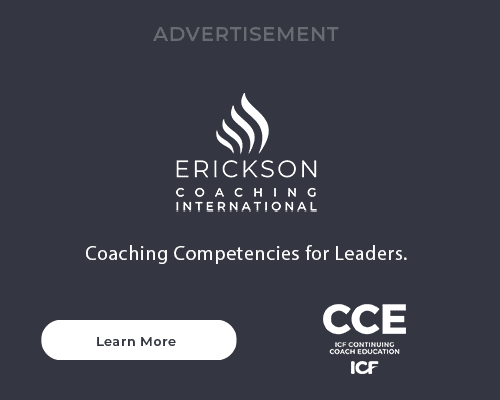Using Objects To Creatively Problem Solve with Our Clients
When I was training as a therapist many years ago, I worked with a young woman who sat opposite me in silence as she tried to find words to explain what was going on in her life. As a result, I wrote a thesis, “When Words Fail,” and started using objects in my work.
Why do we rely on verbal communication in coaching when so many of us struggle to put together well-formed sentences? I believe that encouraging our clients to map out their thoughts using various objects allows them to express things differently, often with less interruption from us.
A Creative Way of Working
Jane came to me because she had heard of the work I do with the BeadTrail process. She was confused and wanted to make sense of her world. I laid out 400 beads, buttons and stones, and she chose what she wanted to work on. She reached for a large red bead immediately. “That represents my relationship with money,” she said defiantly, placing it firmly in the middle of the board. She picked others to serve as people, places, thoughts, blockages, etc. As she moved everything around, she verbalized her thoughts, gaining some key insights; something seemed to shift for her. (Permission given to use this case study.)
When we actively move objects around, we can see how different arrangements look. I notice clients move items back and forth, trying various layouts until it all seems to fit together in the “right” way. By asking questions like, “Is everything in the right place?” or “Is there anything you would like to add or take away?” the client works through the process seamlessly, even when the chosen topic is quite difficult. Some clients become unstuck on what previously seemed impossible. About 20 percent of my clients never tell me what they are working on. I give them the option not to explain it. For some, that feels more powerful. I can still ask questions and notice things about their selection of beads if requested to do so.
This work allows me to stay present in the moment with the client, build trust and intimacy, moving freely and attentively through the coaching process.
Tips for Using Objects in Coaching
Collected objects can be offered to our clients if it seems appropriate when we are with them face to face. Apart from beads, buttons and stones, I also have a box of things I carry around with me for timeline work. These include a little piece of gold, a key, a miniature tape measure, a lighthouse ornament, a coin, a battery and a pocket watch. Such items could be useful when our clients want to explore time and space or metaphor.
Something as simple as a few pebbles from the beach could be provided to someone who wants to map out their team or their family. Asking them to pick a pebble for each person, or significant characters, and lay them out could lead to an interesting discussion. It can also be used to ask questions and make observations.
If we work at a distance, we can encourage our client to pick their own objects to represent certain things. Recent items my clients have used include a remote control, pens, plasticine and a fruit bowl. They can use anything available to them.
Many years ago, when I was working as a therapist, a teenage boy came to see me and started drawing pictures. He had not been able to discuss what was on his mind due to the traumatic nature of events. It seemed so much easier to look down at his pictures and talk about them. I was not asking him personal questions; I was commenting on his pictures, and this had a remarkable effect. It may be easier for someone to open up about a situation when they are looking down at a group of objects rather than into our eyes as we wait for an answer.
The creative process consists of many interconnecting cognitive links, both conscious and unconscious. By involving different regions of the brain, I believe we can tap into places that otherwise may be unavailable to us. I watch with interest as my clients progress, finding solutions easily and quickly that may not have been gained by just using verbal language.



